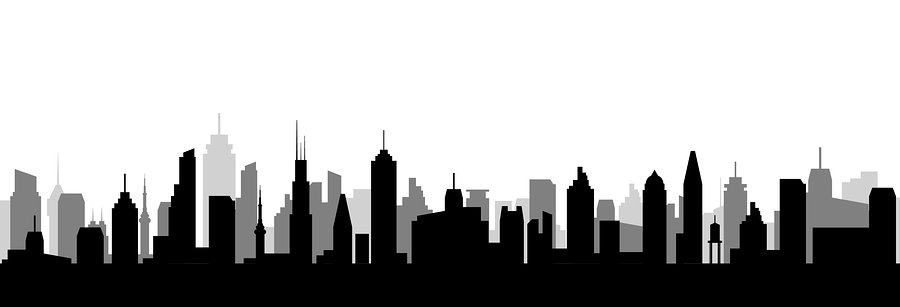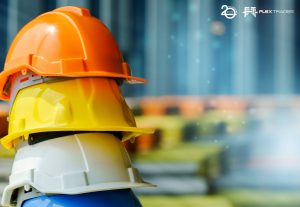Lunch Atop the Skyscraper
[av_image src=’https://www.pmgservices.com/content/uploads/2020/06/skyscraper-845×684.jpg’ attachment=’8250′ attachment_size=’gallery’ align=’center’ animation=’no-animation’ link=’manually,http://100photos.time.com/photos/lunch-atop-a-skyscraper’ target=’_blank’ styling=” caption=” font_size=” appearance=” custom_class=”][/av_image]
We’ve all seen the photo. It’s iconic and, once you’ve seen it, it’s hard to un-see it. 11 men seated casually atop a steel beam, 40-50 stories in the air, above the hard ground of Manhattan while holding lunchboxes and staring at a camera. It’s easy to remember not only because of the mystery surrounding the photo, (who took it, who are they?) but also because it shows a stark contrast to the requirements and safety processes in place today for the iron workers and construction workers building the skyscrapers you see on a daily basis.
In recognition of June being National Skyscraper Month, here’s what you need to know about this iconic photo.
[av_image src=’https://www.pmgservices.com/content/uploads/2020/06/sixth_avenue-300×241.jpg’ attachment=’8252′ attachment_size=’medium’ align=’left’ animation=’no-animation’ link=’manually,https://www.topviewnyc.com/attractions/top-of-the-rock’ target=’_blank’ styling=” caption=” font_size=” appearance=” custom_class=”][/av_image]
It was 1931 when construction of Rockefeller Center began. Rockefeller Center is a large composite of 19 commercial buildings and skyscrapers, spread out over 22 acres of land in Midtown Manhattan. As you can guess, the Rockefeller family commissioned the Rockefeller Center. The family dreamt it up during times of economic prosperity (the Roaring 20s). Even with the stock market crash in 1929, the vision for the project was maintained, with the first group of buildings opening in 1933 and the majority of the complex completed by 1939.
It is considered to be one of the greatest projects of the Depression Era (1929-1933) but, at the time of construction, the economy was in an awful state. One third of manufacturing firms were out of business and 65% of construction workers were out of work. Therefore, upon hearing (and seeing) the construction of Rockefeller Center, men lined up in the streets, at construction sites, and other areas of the city waiting to work on the building for the day. To illustrate and understand this more fully, check out Sky Boys, How They Built the Empire State Building. A children’s book but, nonetheless, a great read for all ages. If you aren’t interested in buying it, at least listen to it online here.
Now, back to the photo. Although many were anxiously waiting to work on the buildings, there was skepticism. Was this the right time to build a city within a city? Heck, there were 15 million people looking for work and the economy had crumbled. Could we use these buildings and this epicenter anytime soon? With questions like that, a publicity stunt was born. By taking photos that showed an expanding city as well as the workforce behind it, the general public could see a beacon of light in an otherwise dark time.
What am I saying then? Yes, these men posed for the photo and the photograph was staged, but that doesn’t make the photo any less powerful now than it was then. Because it was a staged effort, there are more photos of the same men. Find one photo of the men stretched out for a nap here and another photo of the men with their hats in the air here. And, if that’s not enough, find some fun facts about Lunch Atop a Skyscraper here.
Take note: June is also National Safety Month. If the fact this photo was staged doesn’t make you a conspiracy theorist like it does for some, you’ll take acute notice of the fact that the 11 men in the Lunch Atop a Skyscraper photo are missing critical Personal Protection Equipment (PPE) such as safety harnesses and fall protection, appropriate work clothing (and shoes! Just look at those shoes!), hard hats, etc. These men were just lucky to get an assignment for the week, or even the day, in building the Rockefeller Center buildings. But it’s far from that now. Those who are still curious can learn about more ways heavy industry has changed in our earlier blog post, Not Our Father’s Factories.
Performing the structural construction of buildings these days comes with high regulations and safety is a #1 priority. You also don’t get the job just for lining up. You have to train, put time in as an apprentice, and show a real commitment to the role (in addition to lacking a fear of heights!). If you like this photo, maybe you’ll like some of our recent PMG photo contest winners, too. Also, if you want to learn more about the trade of Ironworkers, check out the links below:
- Ironworkers – Reinforcing Iron & Rebar
- How to Become an Ironworker
- Sky Walking
- Sky Cowboys
- Inside the Hard Hat
- Men at Lunch Documentary
Kim Mooney, Technical Manager & Coach








